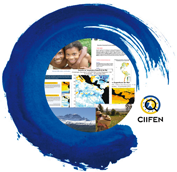ENSO impact on hydrology in Peru
Abstract. The El Niño and La Niña impacts on the hydrology of Peru were assessed based on discharge data (1968–2006) of 20 river catchments distributed over three drainage regions in Peru: 14 in the Pacific Coast (PC), 3 in the Lake Titicaca (TL) region, and 3 in the Amazonas (AM).
To classify the El Niño and La Niña events, we used the Southern Oscillation Index (SOI) based on hydrological years (September to August). Using the SOI values, the events were re-classified as strong El Niño (SEN), moderate El Niño (MEN), normal years (N), moderate La Niña (MLN) and strong La Niña (SLN).
On average during the SEN years, sharp increases occurred in the discharges in the north central area of the PC and decreases in the remaining discharge stations that were analyzed, while in the years of MEN events, these changes show different responses than those of the SEN. During the years classified as La Niña, positive changes are mostly observed in the majority of the stations in the rivers located in the center of Peru's Pacific Coast. Another important result of this work is that the Ilave River (south of the Titicaca watershed) shows higher positive (negative) impacts during La Niña (El Niño) years, a fact that is not clearly seen in the rivers of the northern part of the Titicaca watershed (Ramis and Huancane rivers).






